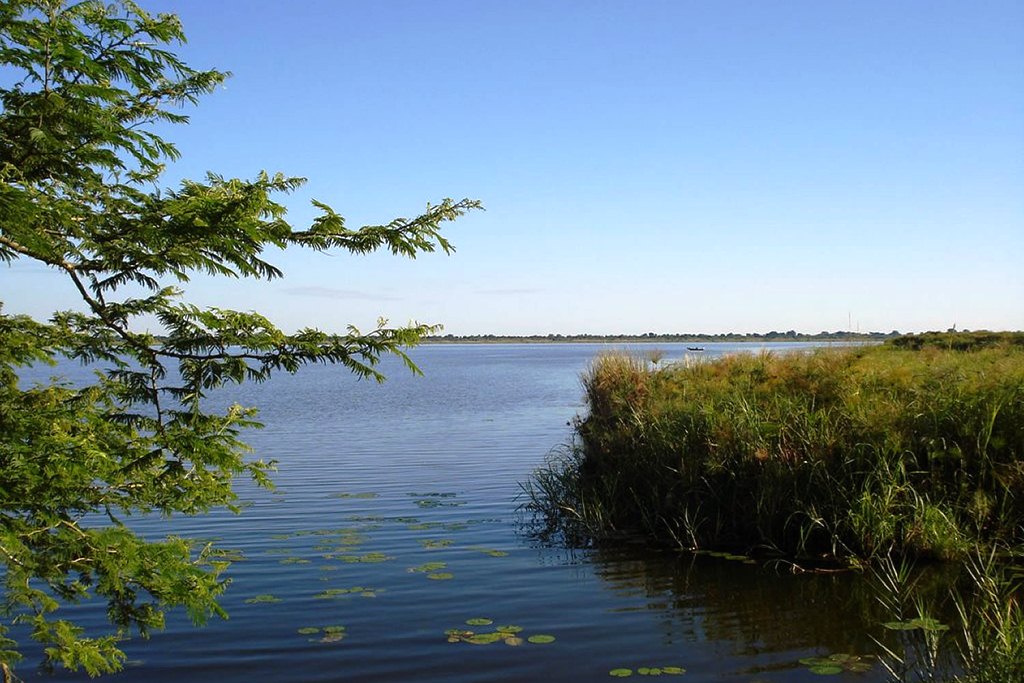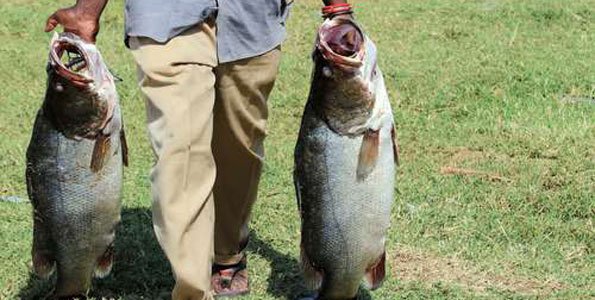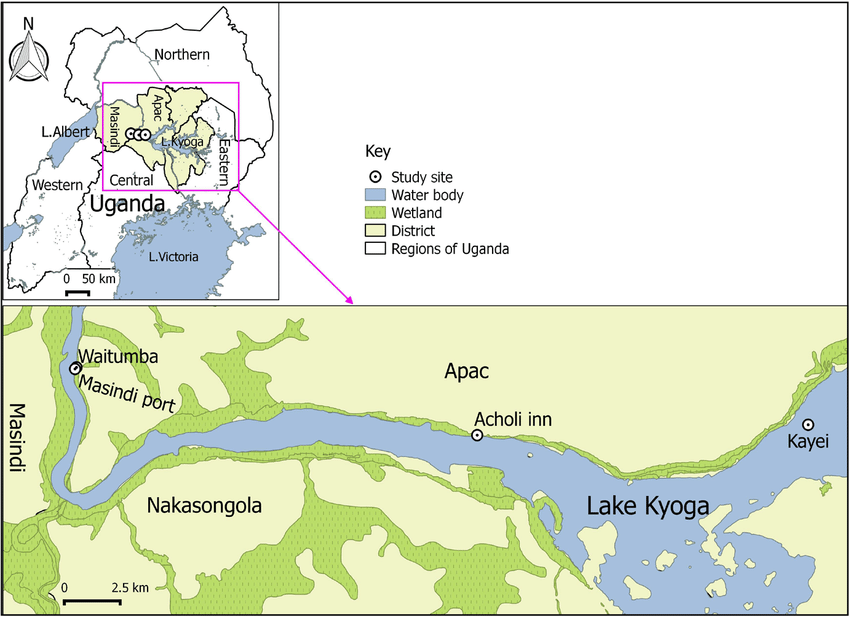Getting Around Lake Kyoga : Lake Kyoga is a Uganda’s large shallow lake located in north-eastern and central parts of the country and was formed by the mighty Victoria Nile in its middle course. This River flows through this shallow Lake while on its way from the massive Lake Victoria about 914 meters above sea level to Lake Albert. The lake has finger like extensions with a surface of about 1,720 square kilometres (660 square miles) with a maximum length of 200 kilometres (120 miles) and depth of only 5.7 meters (19 feet). Besides the Victoria Nile, another source of water for this Lake is Mount Elgon on the Kenya-Uganda border and surprisingly, much as the Lake is considered to be part of the vast Great Lakes system, it is actually not regarded as a Great Lake.
The Victoria Nile flows through Lake Kyoga on its way from Lake Victoria to Lake Albert and the extensions of Lake Kyoga include Lake Kwania, Lake Bisina and Lake Opeta. These “finger lakes” are surrounded by swampland during rainy seasons. All lakes in the Lake Kyoga basin are shallow, usually reaching a depth of only eight or nine meters, and Lake Opeta forms a separate lake during dry seasons.

Much of the swampy shoreline is covered with papyrus and water hyacinth. The papyrus also forms floating islands that drift between a number of small permanent islands. Extensive wetlands fed by a complex system of streams and rivers surround the lakes.
Flora and Fauna within and around Lake Kyoga
The Lake is blanketed by water lilies while the majority of the swampy shoreline is characterized by mainly water hyacinth and papyrus which also form the floating Islands after moving between several small permanent Islands. Vast expanses of marshlands are drained by a system of Rivers and streams that also border Lake Kyoga and the nearby small and shallow Lake Kwania. Therefore, the extensions of this shallow Lake include Lakes Opeta, Kwania and Bisina, forming finger-like Lakes system which is completely surrounded by marshlands during the rainy seasons. 46 species of fish including Nile Perch that was introduced in 1950s have been found in Lake Kyoga, and crocodiles are numerous
Lake Kyoga has three different environmental zones: the open water deeper than 3 m; the water less than 3 m, which is covered completely with water lilies and water hyacinth; and the swamps mainly papyrus, which fringe the shoreline. Lake Kyoga has a rich biodiversity. These include flora and fauna such as Cyperus Papyrus, Hyppo Grass (Vossia Cuspidate), Cattail (Typha spp.), Water Lily (Nymphea spp.), Water Lettuce (Pistia stratiodes). Large crocodile populations are also found in the lake.
This Lake and the surrounding areas experiences a Tropical climate (mainly due to its altitude) characterized by two rainy Seasons-October to December and March to May while the dry season starts from December to February with the general temperatures of the northern side of the Lake being higher than the southern part.
Lake Kyoga has enough water, because of two rainy seasons, the first from the months October to December and the second between March and May. In the dry period from December to February, the temperatures in the North of Uganda are higher than in the South. All in all, Lake Kyoga and Uganda have a tropical climate, tempered by the altitude.
The lake has a catchment area of about 75,000 sq. km. The main human activities in the Lake Kyoga basin are fishing, cultivation and livestock keeping. There are no industrial enterprises in the area, due to lack of grid or any other power connectivity.
The lake is dotted with large islands of papyrus and water hyacinth mats (sudds). As a result of poor agronomic practices in the catchment area and siltation caused by the Victoria Nile, the sudds became habitable to fishermen around 1997-1998, thus continuously reducing the quality and quantity of the lake.
This shallow Lake is characterized by swampy papyrus-reeded shores, large tracts of papyrus that are broken loose by strong winds that sometimes entirely block the Nile river, making navigation only possible by shallow-draft vessels between Masindi Port and Namasagali. Lake Kyoga is surrounded by vast wetlands that are fed by a complex system of streams and rivers that all offer habitats to wide range of fish species, and the flora species here include the water Lettuce, Hyppo grass, water lilies, Cyperus Papyrus and Cattail among others.

There are over 46 species of fish within Lake Kyoga including Nile Perch, Tilapia, Mud fish (within the shallow swamps), Catfish, lungfish and silverfish among others while the deeper shorelines are habitats to numerous crocodiles. The Nile Perch were originally not found in this shallow Lake but were introduced in the late 1950s. However, the introduction of Nile Perch fish also came with negative effects because it led to the extinction of several domestic fish species including Barbus Kiogae, Tilapia variabilis, Claris mossambicus, Haplochromis macrodon, Synodontis victoriae, Tilapia esculenta and Schilbe mystus and Mormyrus kanumme among others.


